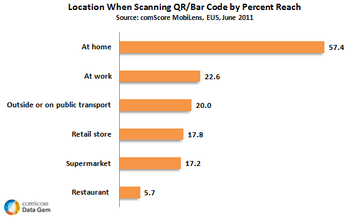ComScore study: 31% of banner ads get lost for viewers

© carlos castilla - Fotolia.com
Sounds good but do advertisers get what publishers promise today, just on the basis of ad impression buying? Well, not really…
Yesterday, ComScore announced their “Validated Campaign Essentials (vCE)” which is said to be a Holistic Measurement tool for verifying the effectiveness of advertising campaigns and their subsequent targeting tactics. Thus, ComScore can double-check of where the ads are being delivered, where they are positioned within a page and who’s eyeballs they meet with the optimization add-on to know where they can be better positioned and at what time. The new technology or tool (vCE) will allow ComScore check campaigns effectiveness on a demographics basis.
ComScore definitely recognizes clients need for a world of better performance with campaigns for a reasonable future of advertisements. However the good news, when you worried about the effectiveness of your last campaign, there is much worse stuff to think about…
ComScore has found, in a recent comprehensive study, that over 31% of online display ads get lost for eyeballs of potential viewers, and for some websites it is even a scary number of 91%. Reasons are obvious: Some of these ads are below the fold. User might not scroll down far enough to view them, and vice versa. Some people just scroll too quick and thus get passed them before they have been loading.
The findings also state that as many as 15% of campaign ads were delivered to viewers outside of the targeted media plan places. An average of 4% of ad impressions found viewers in locations that weren’t on the plan, or where products weren’t available. Do you still wonder why the above mentioned banner campaigns reach us? But ComScore works on the issue…
“One big issue with internet advertising is that not all ads that are served end up being seen. This is a core issue raised by the Making Measurement Make Sense (3MS) initiative. In order for marketers to have the same confidence in the digital channel as they do in TV, we need measurement around the visibility of ads.” Mike Donahue, EVP, Strategic Partnerships, ComScore
Spot On!
Google will penalize companies and platforms that have too many ads above the fold in the future: 3 ads per page is sufficient and strategically clever, Google advices in this video. Just imagine your banners are being delivered to platforms that are damaging for your brand. It happens. Impressions appear beside content that were defined as “not brand safe” by the advertiser. Of all tested campaigns, 72% showed up on pages that had objectionable content, as defined by the brand. Now, that ComScore and advertisers like Chrysler, Discover, E*TRADE Financial, Ford, Kellogg’s, Kimberly Clark and Kraft among others push the development of the third-party tracking, there might be hope that consumers and clients get banners delivered that are targeted the right way. Nevertheless, companies need to start thinking about the right call-to-action in order to get the right conversation figures…

 Many families, and especially couples, experience new formats of evening togetherness. Couples are not leaning back any longer and simply watching TV, or having relaxed chats next to it. With most couples, both partners are using their smartphones, tablets or notebooks to chat with friends, to update their status for their fans and keep in touch with their digital fellows while the TV sceen is fighting for viewing figures.
Many families, and especially couples, experience new formats of evening togetherness. Couples are not leaning back any longer and simply watching TV, or having relaxed chats next to it. With most couples, both partners are using their smartphones, tablets or notebooks to chat with friends, to update their status for their fans and keep in touch with their digital fellows while the TV sceen is fighting for viewing figures.



 According to
According to 
 With over 350 million active mobile users across 475 wireless operators worldwide on Facebook’s mobile sites, marketers wonder which tactics they should be using to generate higher engagement levels. But also Facebook’s new iPad app and their mobile site shows that also Facebook knows about the value mobile offers to their business.
With over 350 million active mobile users across 475 wireless operators worldwide on Facebook’s mobile sites, marketers wonder which tactics they should be using to generate higher engagement levels. But also Facebook’s new iPad app and their mobile site shows that also Facebook knows about the value mobile offers to their business.